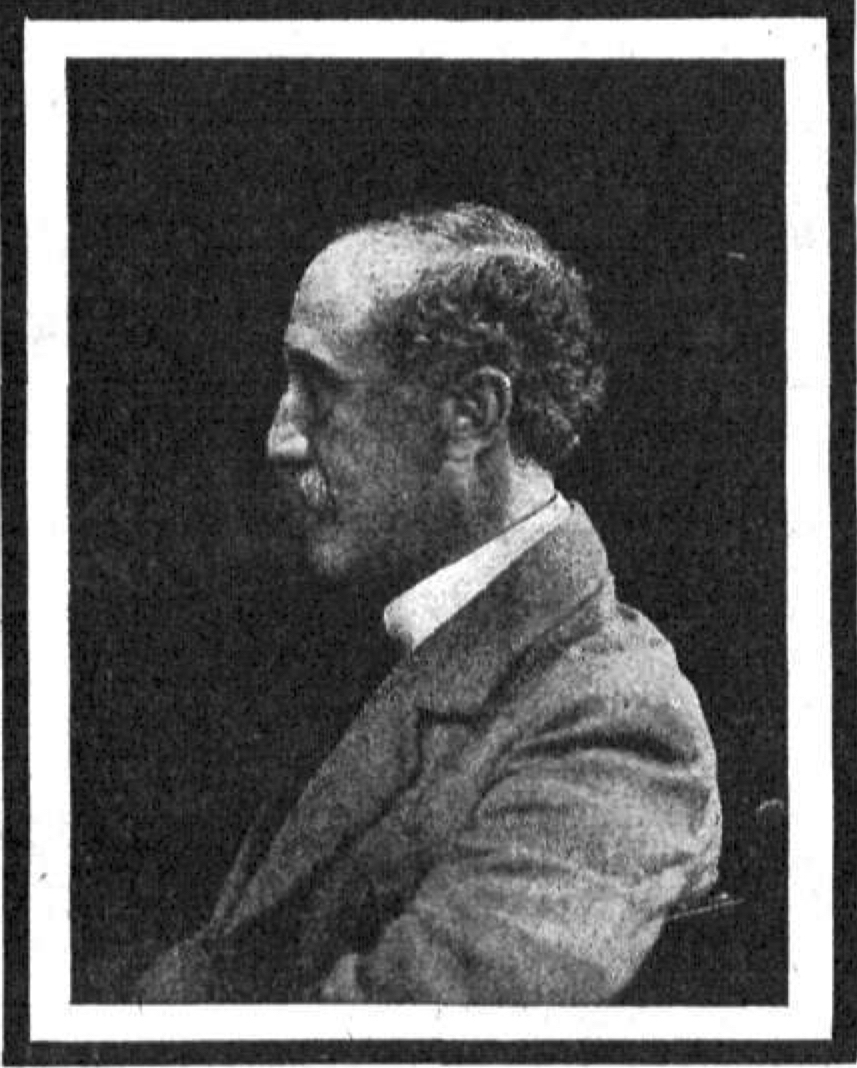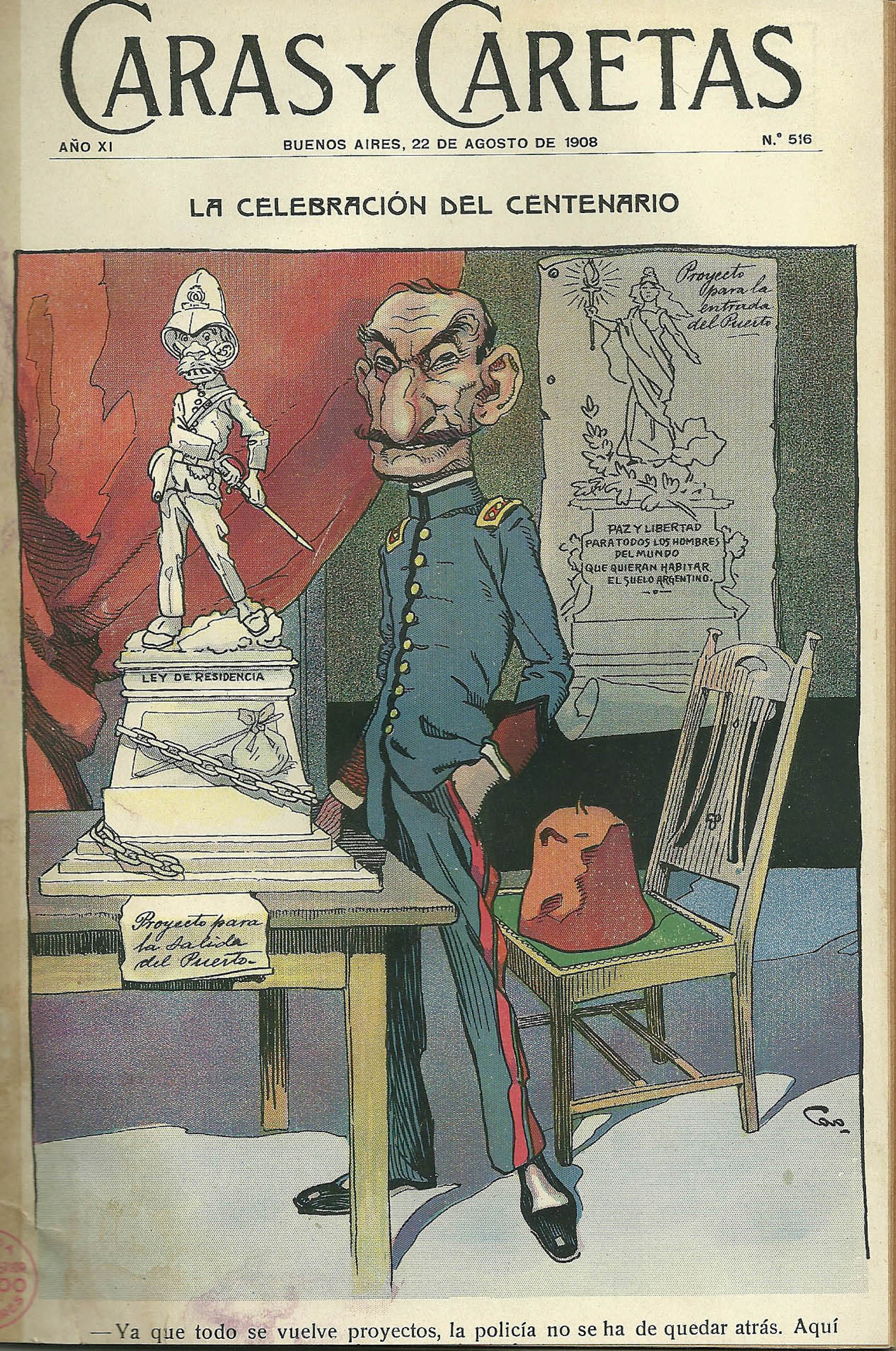Archive
José Maria Cao
- José Maria
- Cao
Demócrito II
- 13-12-1862
- Cervo (ES)
- 27-01-1918
- Lanús (AR)
- CartoonistIllustratorGraphic Artist
“Master of the pencil and the pen”, Galician artist José María Cao became one of the most relevant illustrators of Buenos Aires press by the beginning of the twentieth century.
Word Count: 31

Portrait of José María Cao, Caras y Caretas, no. 1 009, 2 February 1918. 
Manuel Mayol, "José María Cao." Caras y Caretas, no. 53, 7 October 1899. 
José María Cao (signed), Caras y Caretas, no. 516, 22 August 1908 (via Wikimedia Commons). Bockelman, Brian. “Bohemians, Anarchists, and Arrabales: How Spanish Graphic Artists Reinvented the Visual Landscape of Buenos Aires, 1880–1920.” Arrival Cities. Migrating Artists and New Metropolitan Topographies in the 20th Century, edited by Burcu Dogramaci et al., Leuven University Press, 2020, pp. 353–370. JSTOR, www.jstor.org/stable/j.ctv16qk3nf.21. Accessed 23 April 2021.
Gutiérrez Viñuales, Rodrigo. “Presencia de España en la Argentina. Dibujo, caricatura y humorismo (1870–1930).” Cuadernos de Arte de la Universidad de Granada, vol. 28, 1997, pp. 113–124, https://revistaseug.ugr.es/index.php/caug/article/view/10779. Accessed 21 April 2021.
La Argentina sin careta. José María Cao, Ilustraciones 1893–1918, edited by Julio Neveleff, exh. cat. Fundación OSDE, Buenos Aires, 2007. issuu, https://issuu.com/rehime/docs/jose_maria_cao_-_la_argentina_sin_careta. Accessed 21 April 2021.
Malosetti Costa, Laura. Arte, humor y política de un gallego en Buenos Aires: José María Cao Luaces. Anuario Centro de Estudios Gallegos, 2004, pp. 143–164.
Malosetti Costa, Laura. “Los ‘gallegos’, el arte y el poder de la risa.” La memoria compartida: España y Argentina en la construcción de un imaginario cultural (1898–1950), edited by Yayo Aznar and Diana B. Wechsler, Paidós, 2005, pp. 245–270. Academia, www.academia.edu/44370093/Los_gallegos_el_arte_y_el_poder_de_la_risa. Accessed 21 April 2021.
Word Count: 203
Anonymous. “José María Cao.” Caras y Caretas, year XXI, no. 1009, 2 February 1918, n.p. [p. 39]. Biblioteca Nacional de España, Hemeroteca Digital, http://hemerotecadigital.bne.es/issue.vm?id=0004547305&search=&lang=es. Accessed 21 April 2021.
Lasso de la Vega, Leoncio. “Caretas.” Caras y Caretas, year II, no. 53, 7 October 1899, n.p. [pp. 31–38]. Biblioteca Nacional de España, Hemeroteca Digital, http://hemerotecadigital.bne.es/issue.vm?id=0004089188&search=&lang=es. Accessed 21 April 2021.
Semanario DON QUIJOTE, 1884–1893, Proyecto Patrimonio Histórico, Instituto de Historia Argentina y Americana "Dr. Emilio Ravignani", Facultad de Filosofía y Letras, http://ravignanidigital.com.ar/libros/quijote/Q10000000.html?a=9&s=50&h=2. Accessed 24 March 2021.
Soiza Reilly, Juan José. “Vicente Blasco Ibáñez y José M. Cao.” Caras y Caretas, year XXXIV, no. 1700, 2 May 1931, n.p. [p. 18]. Biblioteca Nacional de España, Hemeroteca Digital, http://hemerotecadigital.bne.es/issue.vm?id=0004703248&search=&lang=es. Accessed 21 April 2021.
Word Count: 157
Buenos Aires, Argentina (1886–1918)
Dr. José María Cao, Lanús (residence); Caras y Caretas, Calle Bolivar 578 to 586, Buenos Aires (editorial office).
- Buenos Aires
- Milena Gallipoli. "José Maria Cao." METROMOD Archive, 2021, https://archive.metromod.net/viewer.p/69/2950/object/5138-7554161, last modified: 12-05-2021.
-
Francisco Fortuny MasaguéPainterIllustratorGraphic ArtistBuenos Aires
Spanish-born Francisco Fortuny migrated to Buenos Aires in 1887. His most renowned work was done as illustrator in printed magazines such as Caras y Caretas.
Word Count: 24
Caras y CaretasMagazineBuenos AiresCaras y Caretas was one of the widest read magazines in Buenos Aires. A collective venture, run largely by exiles, it renewed the public press through an attractive layout.
Word Count: 29